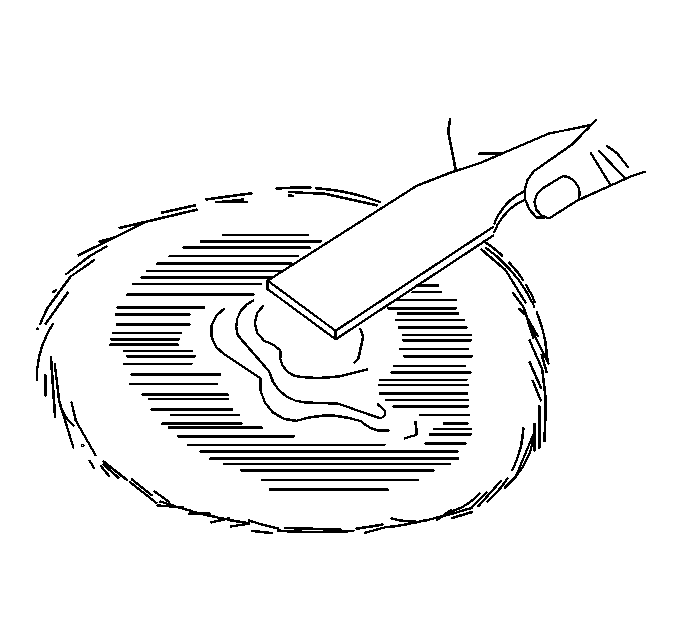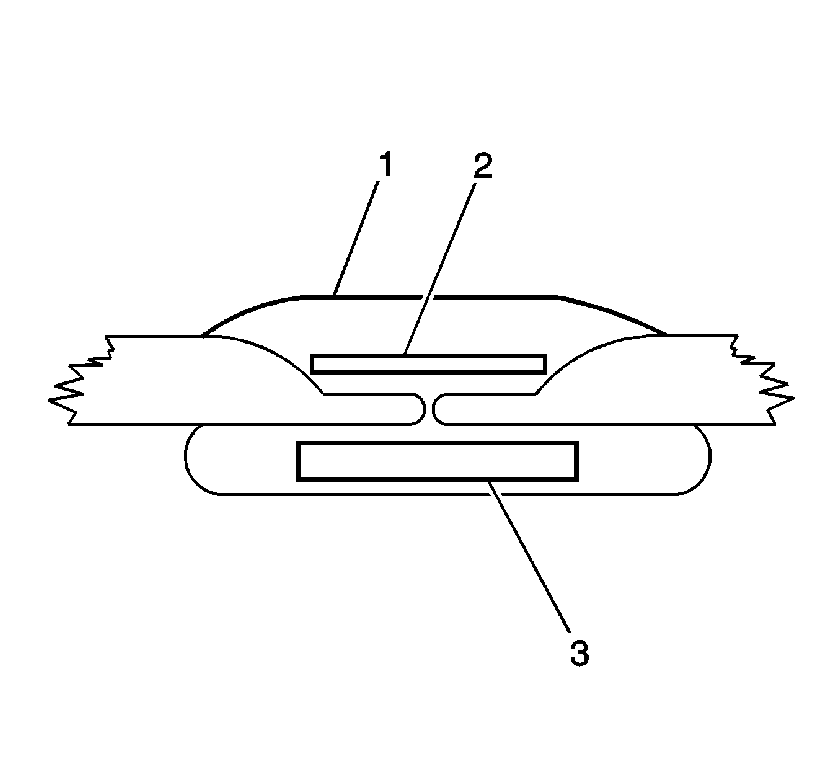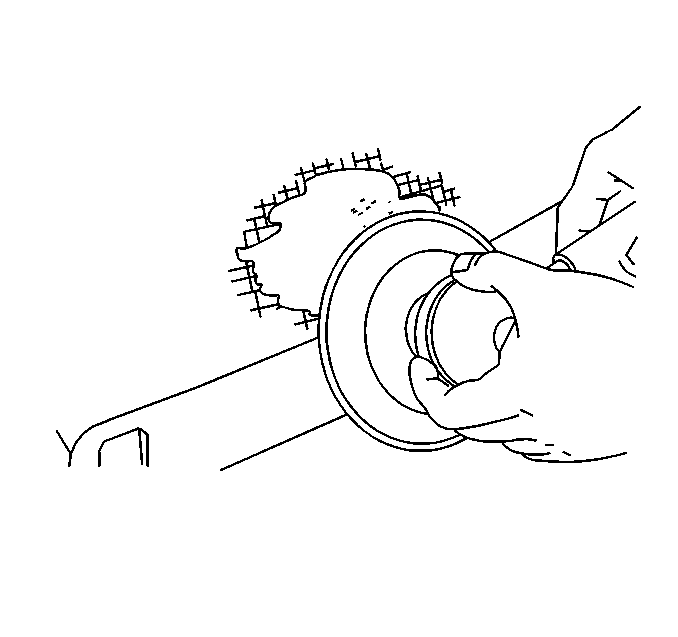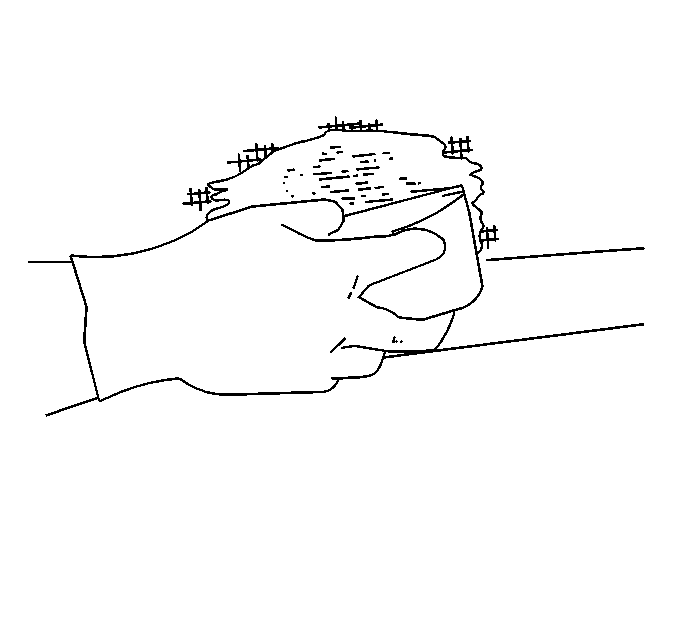For 1990-2009 cars only
Before proceeding, refer to General Plastic Repair and Plastic Repair Precautions .
- Clean and inspect the damaged area. Refer to General Plastic Repair .
- Clamp or tape the damaged area in order to maintain alignment.
- Prepare the damaged area for the installation of a backing patch. If the rear of the damage is accessible proceed with steps 4 through 6. If the rear of the damage is not accessible proceed to step 7.
- Scuff the inner surface with a #80 grit disc on a D A sander or by hand if the access is limited.
- Determine the proper repair material. Refer to Flexible Plastic Part Repair Materials or Rigid Plastic Part Repair Materials .
- Mix the repair material following the manufacturer's instructions.
- Apply, follow the manufacturer's instructions, the repair material to the inner surface.
- Apply a backing patch and proceed to step 21. Refer to Backing Patch Fabrication .
- If the rear of the damaged area is not accessible remove some of the damaged material in order to form an access hole through which you can slip a backing patch.
- Cut a backing patch from a scrap piece of panel. Refer to Backing Patch Fabrication .
- Sand the mating surface of the patch.
- Reach through the access hole and sand the underside of the repair area.
- Drill 2 holes in the backing patch.
- Thread a piece of waxed wire through the holes in order to assist in holding the patch in place after installation.
- Determine the proper repair material. Refer to Flexible Plastic Part Repair Materials or Rigid Plastic Part Repair Materials .
- Mix, follow the manufacturer's recommendations, the correct repair material.
- Apply , follow the manufacturer's recommendation, the correct repair material to the mating surface of the patch.
- Slip the patch through the access hole.
- Pull up hard on the waxed wire until the repair material squeezes out on all sides.
- Twist the wire around a piece of wood in order to hold the patch in position until the repair material cures.
- Cure the repair material according to the manufacturer's instructions.
- Remove any tape, clamps, or waxed wire used to maintain alignment.
- On the outer surface of the panel, bevel the damaged area with a #50 grit Roloc disc in order to extend the contact between the repair material and the substrate.
- Using a D A sander, feather out several inches beyond the damaged area in order to remove any paint or primer from the substrate, and provide a proper adhesion surface.
- Carefully and smoothly apply a light coat of repair material to the damaged area.
- Add mat material as needed to strengthen.
- Apply a final layer of repair material (1) at a slightly higher level than the surrounding area.
- Cure the repair material according to the manufacturer's instructions.
- Rough out the surface using a #80 grit disc on a D A sander or a curved-tooth body file.
- Finish sanding using a #220-320 grit wet or dry sandpaper on a sanding block.
- Prime and refinish as necessary. Refer to GM 4901 M-D for a listing of approved materials. Follow the procedures recommended by the material manufacturer.
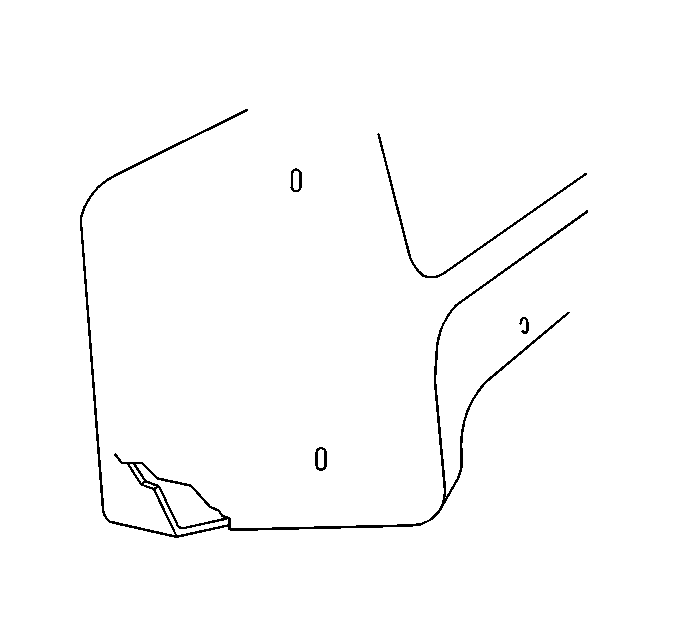
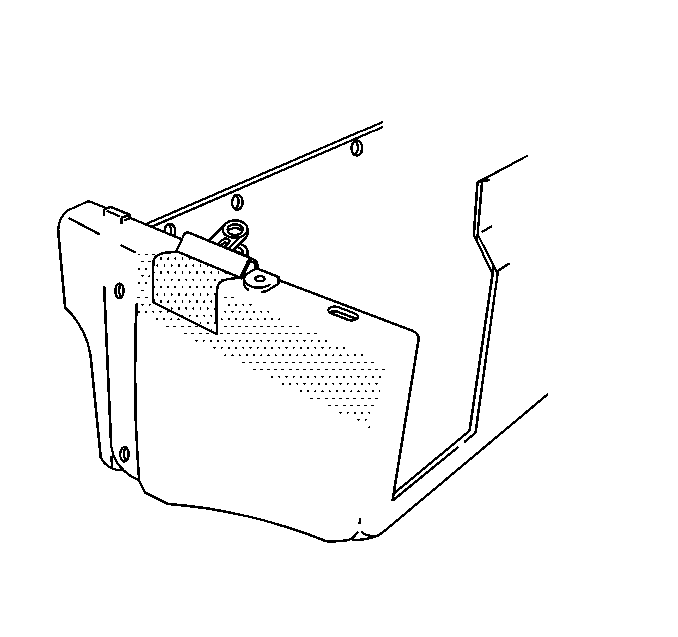
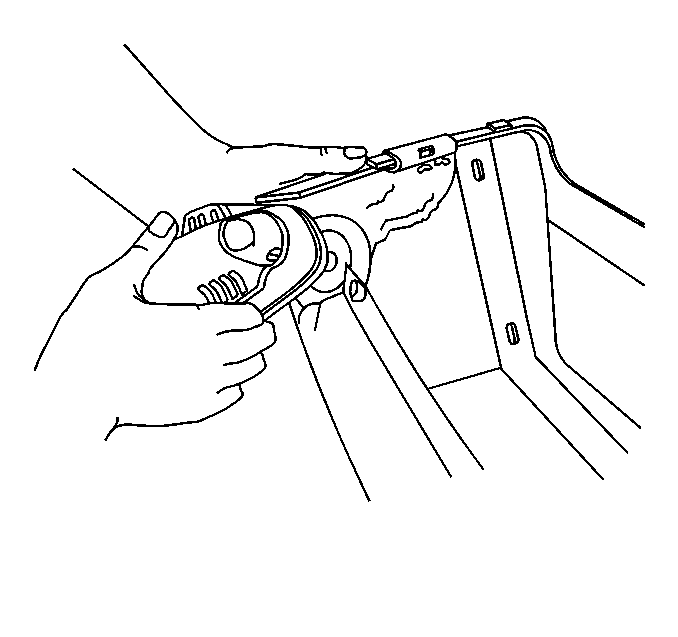
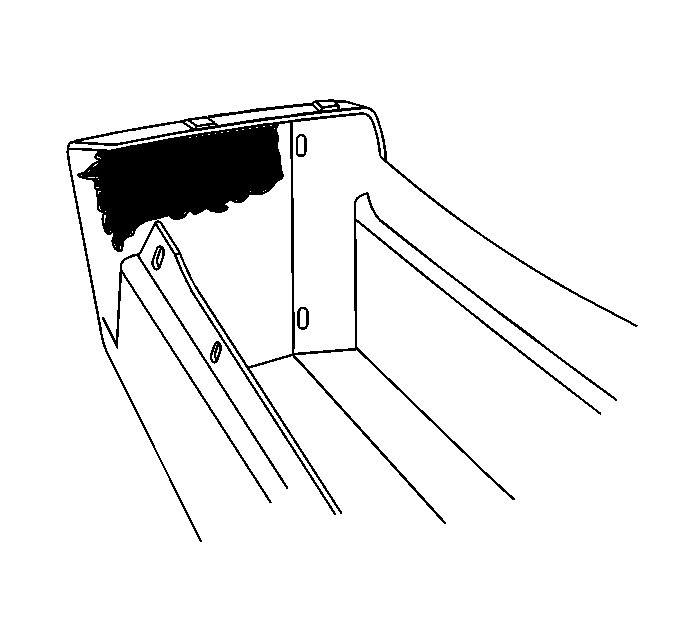
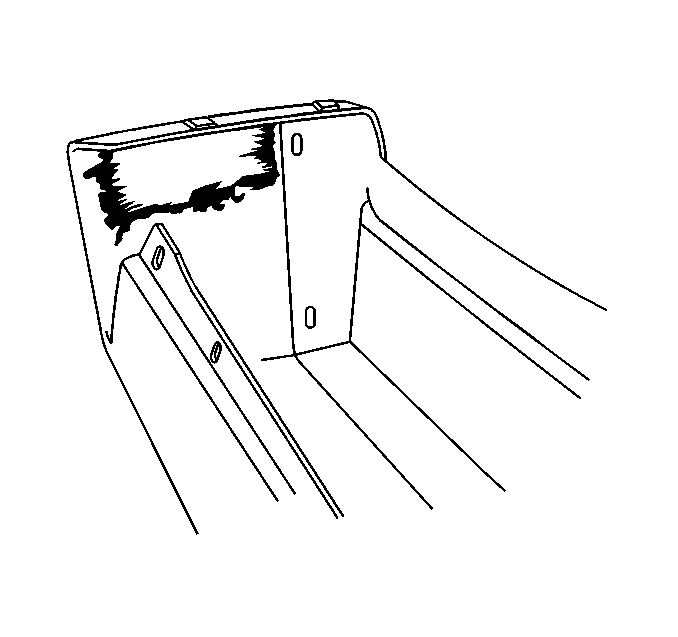
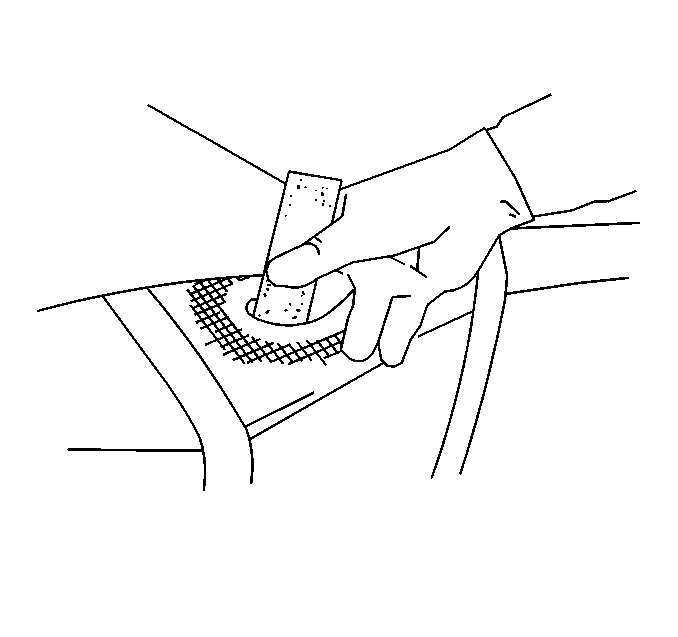
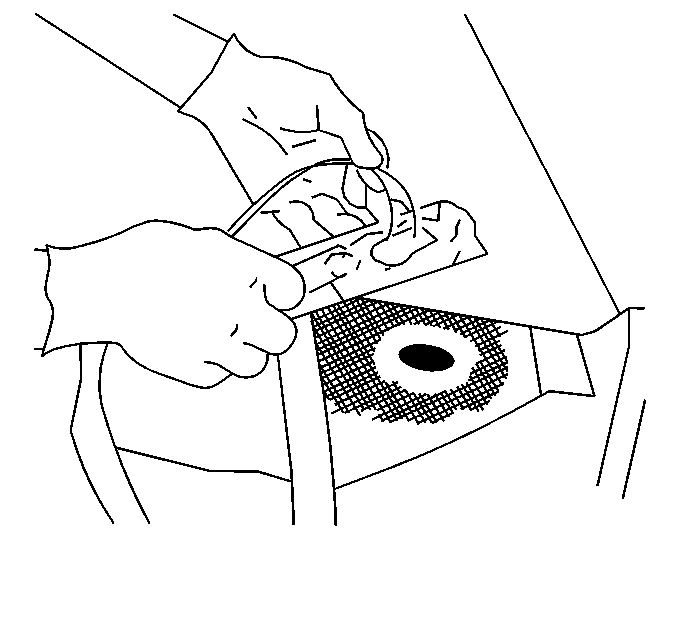
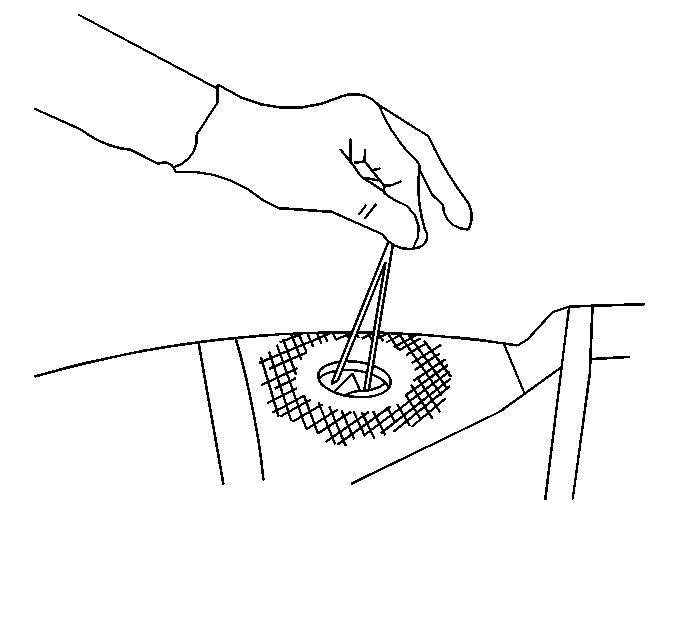
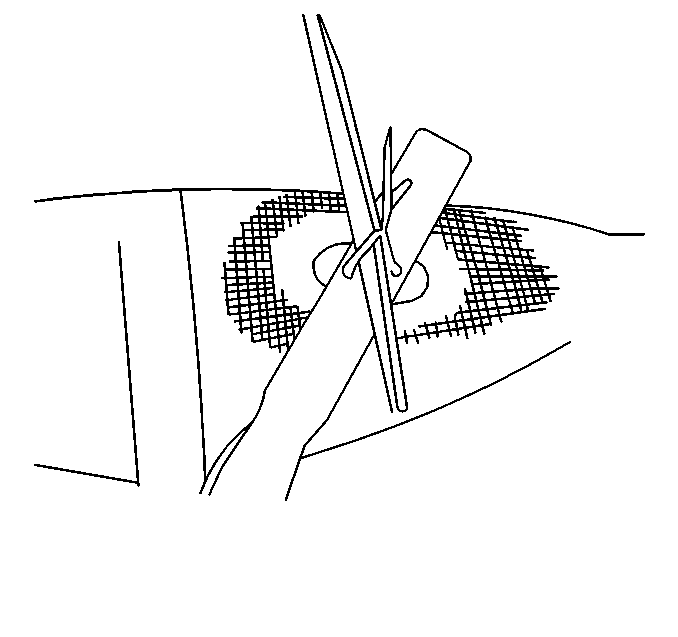
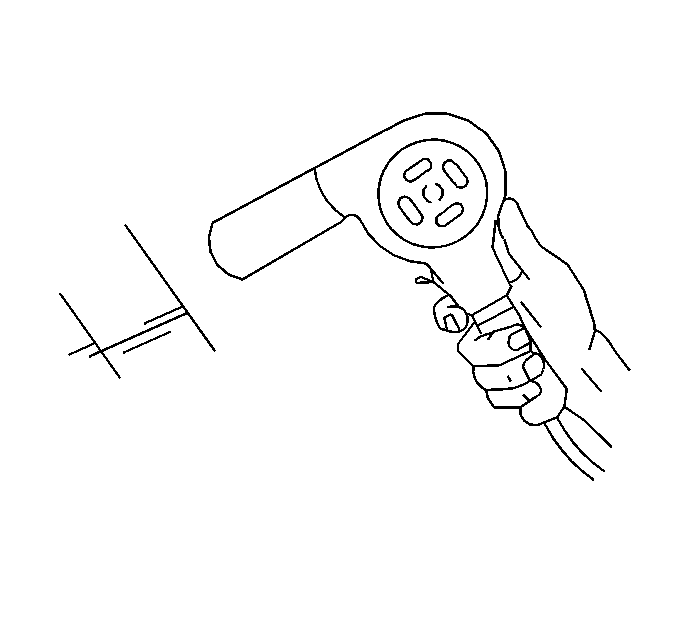

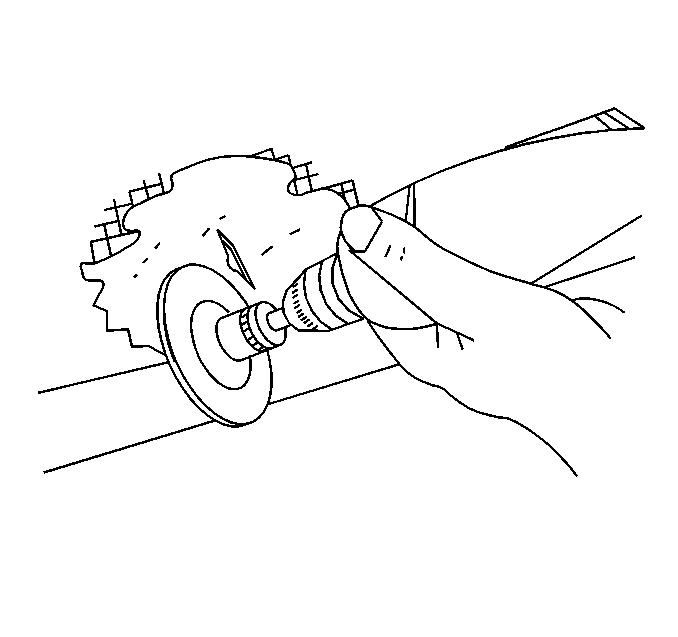
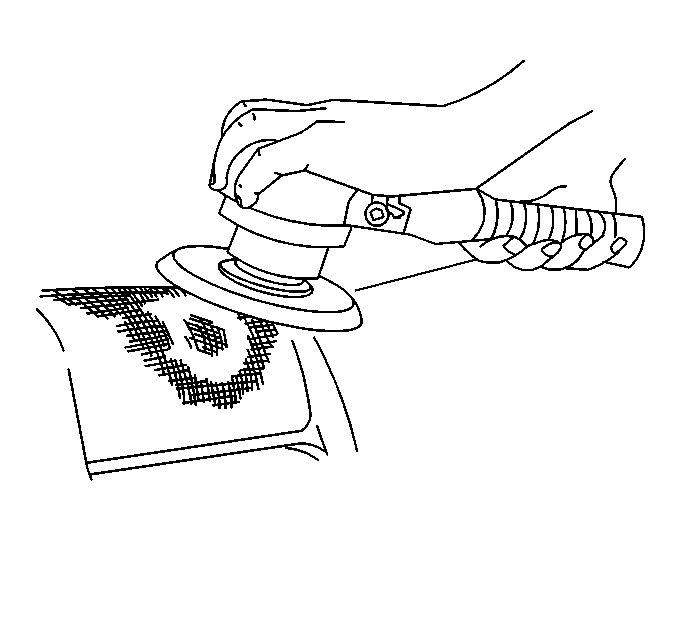
| • | Use a #80 grit disc on rigid panels. |
| • | Use a #180 grit disc on flexible panels. |
